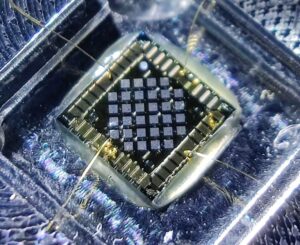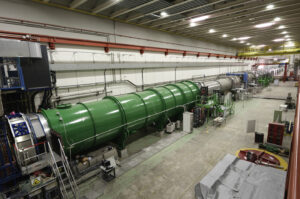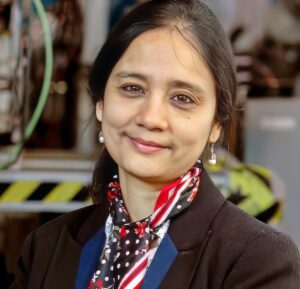A record-setting run of ultracold neutrons has set the stage for Canadian researchers to begin searching for answers to one of the biggest cosmological conundrums: why is the Universe made of matter?
In a groundbreaking technical feat, a research team at TRIUMF has produced a record-setting number of ultracold neutrons (UCN). On Friday, June 13, members of the TRIUMF Ultracold Advanced Neutron source (TUCAN) collaboration used a beam from TRIUMF’s 520 MeV cyclotron to produce a batch of neutrons, then chilled them to just a fraction above absolute zero – about 0.003 Kelvin – using new world-leading cryogenic infrastructure. The result builds on the 2017 achievement of first Canadian UCN production by setting a new record for UCN production in Canada and opening the door for the team to begin searching for answers to one of the universe’s most enduring mysteries: why our universe is made of matter.
“We started this project with the goal of setting a new world record for ultracold neutron production,” said Professor Jeff Martin, Canada Research Chair Tier 1 from the University of Winnipeg and TUCAN collaboration co-spokesperson. “We’ve now beaten our own Canadian record, and these new results show that the world record is within reach.”
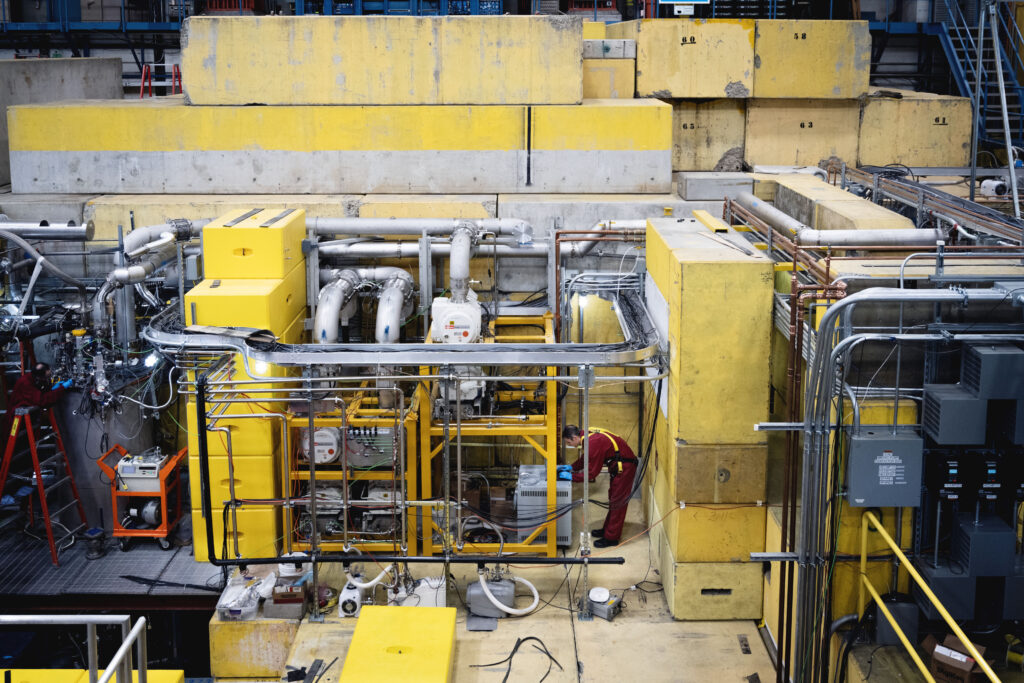
Dr. Rüdiger Picker, TRIUMF Research Scientist and TUCAN collaborator, working atop the TUCAN facility at TRIUMF
The neutron’s hidden signal
With ultracold precision, TRIUMF is chasing clues from the subatomic world to answer cosmos-scale questions.
Humble neutrons, which carry no electrical charge but exist within every atom (apart from hydrogen) in the Universe, may hold a profound clue in our search to better understand the forces that govern our universe.
Even before the discovery of the Higgs Boson in 2012, one of the biggest gaps in the Standard Model has been its failure to explain why the universe contains more matter than antimatter. In the moments immediately after the Big Bang, matter and antimatter should have formed in equal amounts; further, all matter and antimatter should have then annihilated into pure energy (as photons). However, matter prevailed, from fundamental particles like quarks through to massive planets and stars – the matter-dominant Universe we see today.
A possible clue to explain this early tilt towards matter over antimatter may lie in the neutron’s internal structure. Though electrically neutral overall, a neutron is made of three charged quarks, which sum to a zero charge. However, if these quarks are arranged asymmetrically, even momentarily, the neutron could showcase a tiny internal charge separation known as a neutron electric dipole moment (nEDM): a miniscule, fleeting moment of electrical polarity that changes how it interacts with matter.
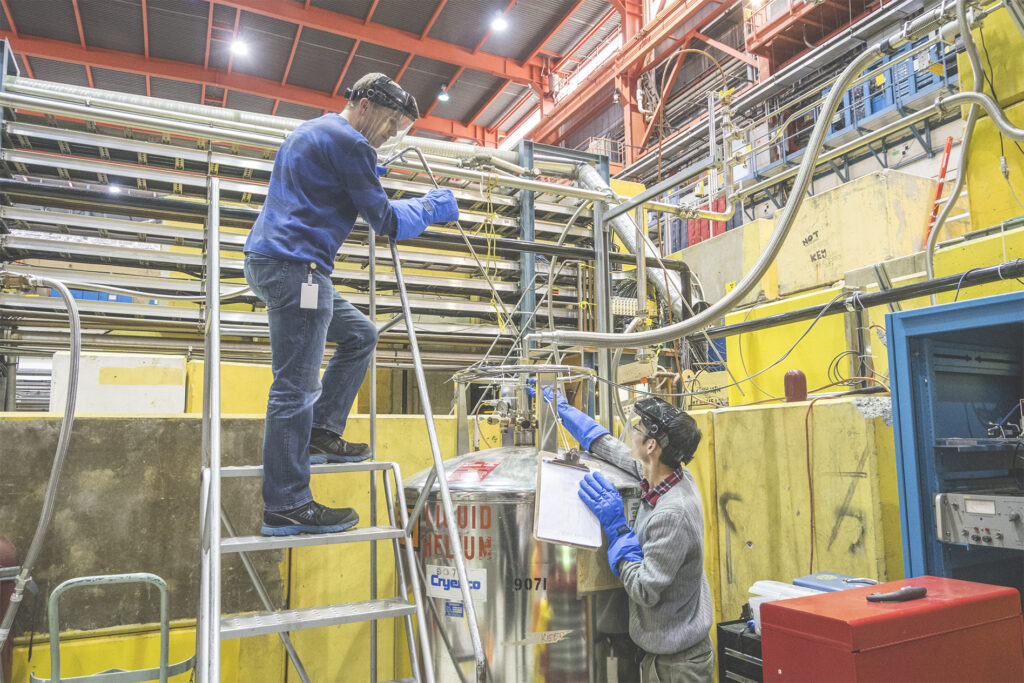
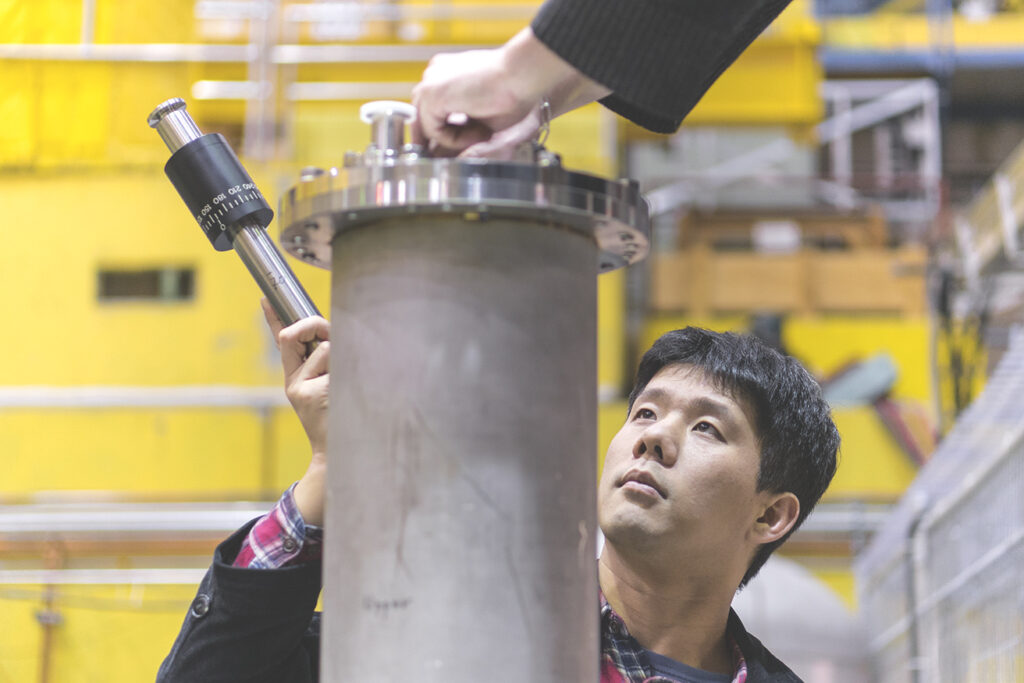
The TUCAN team installing and testing in 2017
This dipole, if it exists, would be infinitesimally small: a hair’s width, if the neutron was stretched to the size of the Earth. Measuring such a faint signal requires neutrons to be cooled to nearly absolute zero, around 0.003 Kelvin, so they can be trapped and studied with precision. Right now, scientists can only detect a neutron electric dipole moment (nEDM) if it’s larger than about 1.1×10⁻²⁶ e-cm. TRIUMF’s experiment, and others like it around the world, are racing to push that limit even further, to 1×10⁻²⁷ e-cm, or about 10 times more sensitive than current methods. The leap in precision could enable us to detect the very faint dipole moment signal, and in turn confirm interactions between quarks as likely culprits behind the matter in the universe.
Slow neutrons: superfluid helium and sub-Kelvin storage
Creating ultracold neutrons (UCNs) begins by generating fast neutrons, then cooling them using advanced cryogenic techniques.
Naturally, neutrons are bound in atomic nuclei, so the first step is to produce free ones. At TRIUMF’s UCN facility, high-energy (480 MeV) protons from the main cyclotron strike a tungsten target, whose neutron-rich nuclei shatter and release fast neutrons. These neutrons are cooled in three stages. First, they pass through room-temperature heavy water, dropping to around 300 K. Then, they will move through liquid deuterium, cooling to about 20 K. Finally, they enter superfluid helium at 0.9 K, where quantum interactions cause them to emit phonons—shedding energy until they reach ultracold temperatures around 0.003 K. Initially traveling over 10,000 km/s, these neutrons are slowed to under 5 m/s—about the speed of a sprinter.
“There is no greater joy than opening a simple valve, and seeing neutrons pour into a detector,” said Martin. “It is a magical experience that subatomic particles can bounce around and move so slowly.”

In the current iteration of the UCN set-up, the researchers have skipped the liquid deuterium step. This key part is the only thing remaining before they really start cranking out neutrons, taking their new record of 940,000 detected neutrons per beam pulse to an astounding 57 million. At that stage, the facility will be prepared to take data on the nEDM.
“TRIUMF is the only facility in the world with this collection of cryogenic infrastructure co-located at an accelerator facility,” said Dr. Rüdiger Picker, TRIUMF Research Scientist and TUCAN collaborator. “After we complete several more tests this year, the installation of the liquid deuterium cryostat, and some preparations during 2026, we look forward to beginning to acquire nEDM data in 2027.”
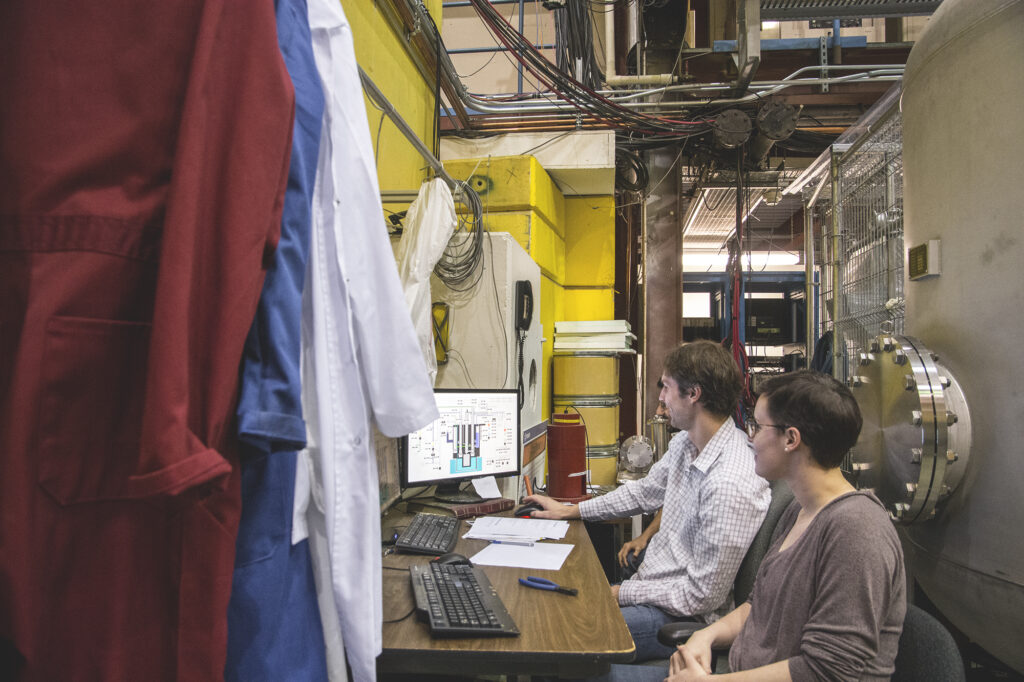
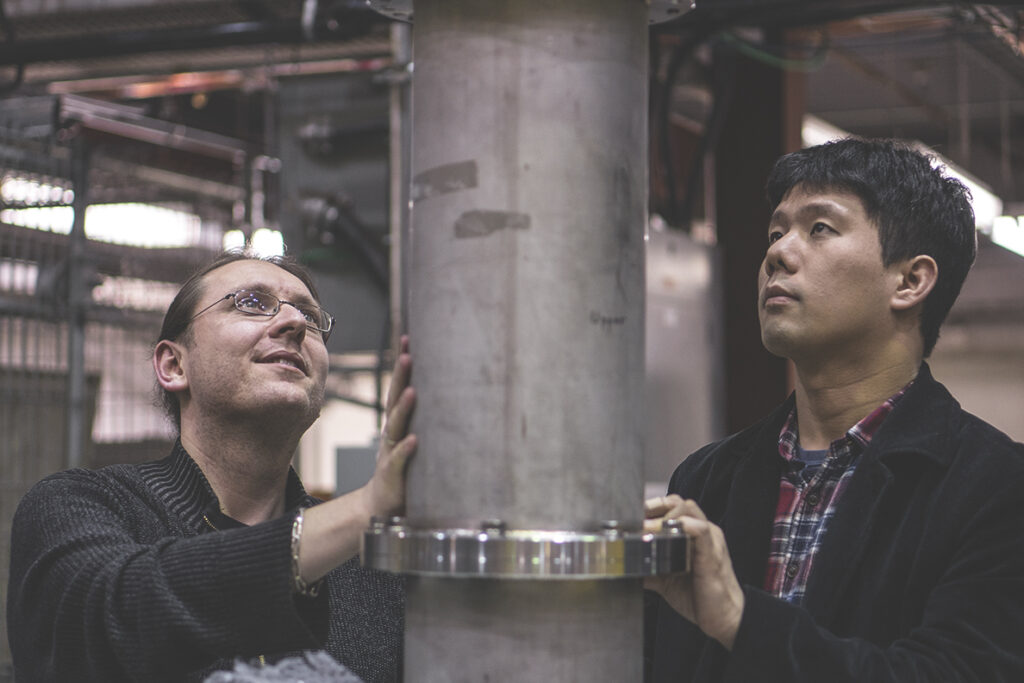
The production of ultracold neutrons at TRIUMF lays the groundwork for one of the most sensitive tests yet of physics beyond the Standard Model. If successful, the experiment could help explain the imbalance that allowed our matter-filled universe — and us — to exist.
The TUCAN collaboration gratefully acknowledges its many supporters and funders, which include the Canada Foundation for Innovation; the Canada Research Chairs program; the B.C. Knowledge Development Fund; Research Manitoba; the Natural Sciences and Engineering Research Council of Canada (NSERC), the Japan Society for the Promotion of Science, the Japan Science and Technology Agency, the Research Center for Nuclear Physics and Osaka University; the Yamada Science Foundation; the Murata Science Foundation; Kyoto University; and the Universidad Nacional Autonoma de Mexico.
Learn more about TRIUMF’s UCN facility.

